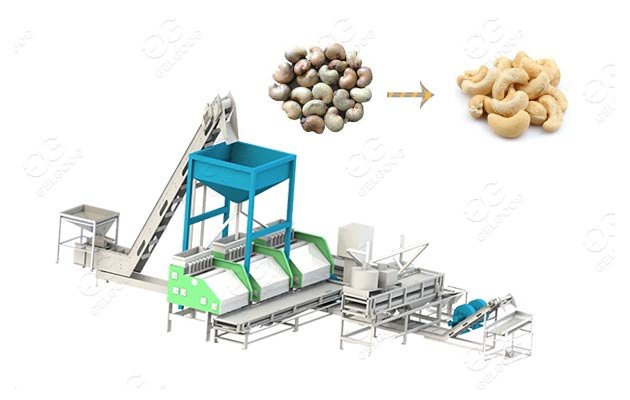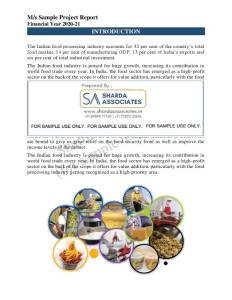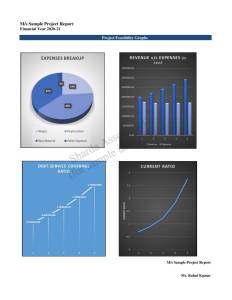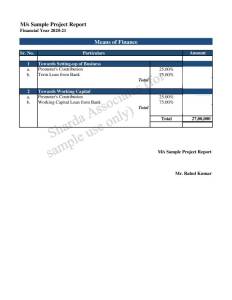Project Report For Cashew Processing Unit
Introduction
Project Report For Cashew Processing Unit is as Follow.
The cashew tree (Anacardium occidentale) is a tropical evergreen tree that yields cashew nuts and apples. While the dwarf cashew can grow to be 6 metres (20 feet) tall, it has shown to be more profitable because to its earlier maturity and higher yields. Because it is a fruit, the cashew nut, like most nuts, is eaten as a snack or used in cooking. The pulp of the cashew apple can be converted into a soft, astringent fruit drink or refined into liqueur. Indian cashew is well-known in the worldwide market for its consistency, colour, and flavour.
The cashew kernel is a good source of fat (46% fat) and protein (18% protein). Furthermore, it is high in calcium, phosphorus, and iron. It has a significant proportion of polyunsaturated fatty acids, specifically the important fatty acid “linoleic acid.” In the worldwide market, three main cashew products are traded: raw nuts, cashew kernels, and cashew nut shell liquid (CNSL). The cashew apple, a fourth product, is mainly prepared and consumed locally.
It is believed that 60% of cashew kernels are consumed as snacks, with the remaining 40% being used in other food preparations. Cashew kernels are either eaten raw or roasted, salted, or spiced. It’s found in candy and bread goods. Finely chopped kernels, for example, are used in the making of bakery biscuits, Indian sweets (Kaju Katri), ice creams, cakes, and chocolates, both at home and in the commercial sector, as well as a paste to spread on toast.

Process Of Cashew Processing Unit
Harvesting: Cashew nuts grow on cashew trees and are harvested when the cashew apples (fruits) ripen and fall to the ground. The cashew nuts are attached to the bottom of the cashew apples.
Shelling: The first step in processing is the removal of the cashew nuts from their shells. This can be done manually or using machines. Manual shelling involves using a handheld cutter to open the shell and remove the nut.
Drying: After shelling, the cashew nuts are spread out to dry. This step helps to reduce the moisture content of the nuts and prepare them for further processing. Typically, the nuts are dried in the sun or using specialized drying machines.
Peeling: Once the nuts are dried, the outer skin or testa needs to be removed. This can be done through mechanical peeling or by using steam to loosen the skin. The peeled nuts are then sorted based on size and quality.
Grading and Sorting: The peeled nuts are graded and sorted based on size, color, and quality. This step ensures that only the best nuts are selected for further processing.
Roasting: The graded and sorted cashew nuts are roasted to enhance their flavor and remove any remaining moisture. Roasting can be done in ovens or specialized cashew roasting machines.
Cooling and Grading: After roasting, the cashew nuts are cooled down and further graded based on color and size. This ensures uniformity in the final product.
Packaging: The processed cashew kernels are packaged in appropriate containers, such as vacuum-sealed bags or tin cans, to maintain their freshness and quality. The packaging also includes labeling with product information and branding.
Market Potential Of Cashew Processing Unit
In 2022, the worldwide cashew market will be worth USD 7 billion. It is predicted to be worth USD 10.5 billion by 2031, with a CAGR of 4.6% over the forecast period (2022-2031).
The worldwide cashew kernel market is being driven by continuous trends that promote healthy diets. As disposable incomes rise and consumer awareness grows, the desire for clean label and nutritious snacks drives cashew kernel market growth. Cashew kernels are high in copper, which is necessary for energy production, brain growth, and immune system strength. As a result, the health benefits of cashew are favourably influencing market growth.
Global cashew output has increased due to the popularity of cashew-based foods globally due to its taste and nutritional benefits. Furthermore, with changing lifestyles and growing knowledge, the demand for plant-based diets has recently surged. Cashew milk and nut butter have grown in popularity globally, particularly in North America and Europe. Furthermore, according to a study published in the British Journal of Nutrition, those who eat nuts more than four times per week can reduce their risk of coronary heart disease by 37%. As a result, there should be an increase in cashew nut production.
Project Report Sample On Cashew Processing Unit
Need Help?
Create 100% Bankable Project Report





